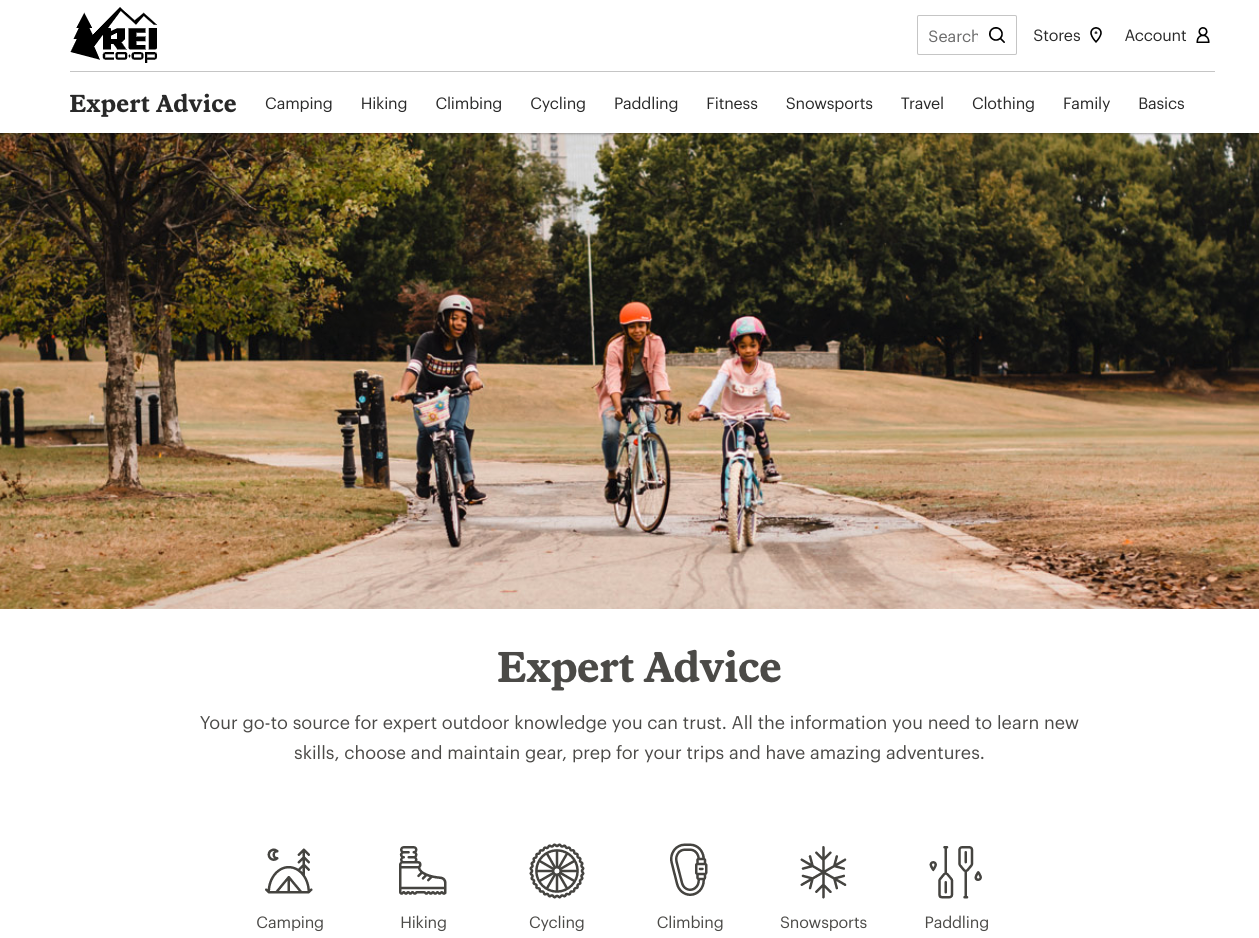Authority is a valuable commodity in the marketing world. People who trust your brand, your message and your expertise will hang on your every word and keep coming back to hear what you have to say.
More importantly, prospects who view your brand as the expert in your field are more likely to buy from you and use your services because, all things being equal, who wouldn’t want to work with the most knowledgeable people around?
Establishing true thought leadership gives you an edge over the competition, helps build a rapport with potential customers and makes it easier to generate conversions and close sales. Let’s take a look at some clear-cut thought leadership examples to inspire your content marketing strategy.
What is thought leadership, and what can it do for your business?
Thought leadership is content that displays your brand’s authority and expertise around a particular subject or topic. You’re not focused on selling anything or even presenting your brand’s messaging or core value propositions — it’s all about building credibility, pure and simple.
True thought leadership can present itself in a variety of ways:
- Breaking down difficult topics so readers can understand them.
- Commenting on industry trends and developments.
- Providing expert advice through step-by-step guides.
Consider who you would turn to for answers on a specific content marketing subject. The usual suspects probably include heavy hitters like Rand Fishkin, Andy Crestodina and Neil Patel. If you’re a regular reader of this blog and have found it useful, you might check in to get our take on things. Whatever or whoever your go-to source is, you trust their judgement and their expertise enough to assume that their viewpoint is credible and accurate.
That credibility has an enormous amount of commercial value for businesses. A 2020 survey jointly conducted by Edelman and LinkedIn found that nearly half of B2B decision-makers (49%) believe thought leadership content influences their purchase decisions.
That’s not all, though:
- 89% say good thought leadership pieces improve their impression of a brand.
- 59% view thought leadership as a more accurate reflection of a vendor’s capabilities than other marketing or sales materials.
- 48% spend at least 1 hour each week reading thought leadership content.
And if that wasn’t enough to convince you, here’s a pretty compelling statistic from the previous year’s survey: 58% of B2B buyers have made purchasing decisions based on thought leadership content.
You don’t need to necessarily draw clear commercial connections to find value in thought leadership either. From a content marketing perspective, thought leadership pieces build engagement with potential customers, increase brand awareness and establish your business as an authoritative voice in the marketplace.
There are search engine optimization (SEO) factors to consider as well. For instance, creating comprehensive guides around different industry subjects can increase the number of backlinks your domain gets from other credible sites. As we all know, strong backlinks are great for boosting your search ranking, Domain Authority and Page Authority.
5 thought leadership examples and takeaways
A good thought leadership example delivers valuable insight, conveys authority and demonstrates expertise around a particular topic — or the industry and marketplace, in general.
1. REI leans on its built-in expertise
You don’t have to poke around REI’s blog too long to figure out what it’s all about. Right at the top of the page, two words tell you everything you need to know about the outdoor retailer’s thought leadership content: “Expert Advice.”

Just about every thought leadership article on the page is a how-to guide, capitalizing on the brand’s name recognition and association with all things outdoorsy. Who would know better about choosing the best camp chair than the people who specialize in selling camping equipment? Each blog post covers subject areas that most interest potential and current customers — hiking, climbing, biking and snowsports, for instance.
Some thought leadership articles also help readers get more value and use from products they bought from the retailer, continuing customer engagement even after a sale. A blog post on how to clean a hydration bladder, for example, can ensure that those products are used correctly and hold up over time, thereby leaving customers feeling satisfied with their purchase.

Another cool feature is the page’s review system. A quick glance will tell visitors which thought leadership articles are useful and worth their time. That star-based review system also provides some much-needed feedback so REI’s content marketing team can go back and update low-scoring blogs to better meet the target audience’s expectations.

Takeaway: Give readers expert guidance and use thought leadership content as a way to continue engagement after a purchase or sale
2. General Electric inspires optimism
Your thought leadership content doesn’t always need to tie directly to your services and offerings. General Electric’s Txchnologist blog is a perfect example.

A quick look at the latest articles wouldn’t tell you much about what GE sells or even what industry it operates in. That is unless the company has a new termite division that we don’t know about. The Txchnologist page almost exclusively focuses on emerging technology, innovation and experimental projects. It’s all very future-focused and driven by a sense of optimism of where this tech can take us.

So, what’s the value of this thought leadership marketing strategy? It establishes GE as a brand on the cutting edge, pushing the boundaries of what’s possible. For a company that’s so heavily involved in research and development, that’s a reputation worth cultivating.
Takeaway: Create thought leadership that reflects your brand’s core values while inspiring your target audience to learn more.
3. Deloitte shows off its unique research
Truthfully, you could pick any one of the Big Four accounting firms for this slot. Each one — Deloitte, Ernst & Young, PwC and KPMG — seems to perfectly understand the value of research-driven thought leadership content.
But we’re focusing on Deloitte here, and the firm’s thought leadership content is second to none. From industry reports and analysis to insights from leading subject matter experts, you can find it all on Deloitte’s website. Each thought leadership article and study dovetails with a specific area of the firm’s services, showcasing its authority in those particular fields and building credibility.

One way Deloitte really disguises its thought leadership content is by offering a wide variety of media for the target audience to explore. It’s not all just blog posts or news articles on the Insights page. There are podcasts, videos and downloadable assets available, letting visitors choose their preferred content type for digesting information. More options means more opportunities for engagement.

Takeaway: Go beyond blog posts to diversify your thought leadership marketing strategy, and lean on your internal subject matter experts and research to deliver impactful content.
4. American Express builds on community insights
Not all thought leadership content needs to spring from the minds of your own staff. American Express’ Business Class insights blog is proof positive that you can get a lot of mileage out of working with third parties to fill out a content calendar. In this case, American Express isn’t promoting guest blogs from industry experts or publishing new report findings. Instead, the financial services giant is turning to its own target audience to share their insights.

The content populating the Business Class blog provides the actionable tips and helpful advice — all driven by real-world experience, of course — that you would expect from an insights blog. The only difference is a good chunk of those thought leadership articles are created by the same visitors who read American Express’ blog every day. It’s a great way to simultaneously build stronger relationships with your target audience while curating the expert insights they appreciate.
Takeaway: There are a lot of different ways to showcase thought leadership. Be sure to explore every avenue to find the right approach for your brand and your message.
5. Brafton’s Jeff Baker is a one-man thought leadership machine
OK, so this last thought leadership example is a bit self-serving, but our Chief Marketing Officer, Jeff Baker, knows how to craft a meaningful thought leadership article. Jeff’s contributions to the Brafton.com blog consistently include in-depth research, unique commentary on the content marketing industry and step-by-step guidance through even the most complex or challenging subjects. If someone out there has written a better guide to keyword research, we haven’t come across it. You could read Jeff’s blog posts — and only his blog posts — and become a better marketer within weeks.

And it’s all backed by specific data, real-life examples and his own hands-on experience. Combine those elements with Jeff’s authoritative voice, and you have a recipe for building the credibility and trust that defines thought leadership marketing.
Takeaway: Make your MVPs the stars of your thought leadership strategy. Shine a light on the in-house experts who have a voice and view that’s entirely their own.
5 qualities of a great thought leader
Whether you create thought leadership content by committee or have a single subject matter expert driving the bus, there are a few qualities and actionable steps you should consider.
- Takes a clear stance: Assume every competitor is going to comment on industry trends and developments. What makes your brand stand out? You need a distinctive viewpoint, even cutting against grain at times.
- Has a unique voice: You should have a clear-cut brand style, tone and voice to get your message across. If not, now’s the time to get on that. If you have a company leader acting as your go-to subject matter expert, find a way to retain their personality in the content while sticking to brand style guidelines. Speaking of which …
- Is personable: When turning to an in-house expert to act as your thought leader, keep in mind that role can really blossom into a public-facing one as your brand gets more exposure. We’re talking about conducting Q&As, participating in interviews, hosting podcasts, conducting webinars and sitting on convention panels. Your thought leader needs to be prepared to handle a public speaking engagement if they want to serve as the voice and face of your brand.
- Understands your audience: Thought leadership content needs to give readers tangible value, and to do that, you first have to understand what your target audience would find useful. Tailor your thought leadership articles and blog posts to different customer segments and fill any knowledge gaps they may have.
- Assesses the competition: Know what the competition is saying — and more importantly, not saying — to potential customers to figure out how your thought leadership strategy can stand out and give your audience valuable insights.
How to become a thought leader in your niche
If you already have those qualities of a successful thought leader, then congrats, you’re well on your way to carving out your own authoritative corner of your industry’s blogosphere. If not, start establishing a clear, strong voice and vision for your brand.
When creating a thought leadership marketing strategy, start with your target audience. Dig into your customer personas — you have those, right? — and figure out what insights would really matter most to them. Then, conduct some competitor research to figure out what gaps their content marketing strategy has and where you can step in with some expert advice.
Don’t forget to promote your thought leadership content. Get on social media and spread the word, include your latest thought leadership article in your next email newsletter or link to it in a related blog post.
Like anything else related to inbound marketing and content marketing, thought leadership strategies demand a lot of work and diligence. Just keep in mind that any brand, no matter the size, can become a thought leader in their respective industry.
Let these thought leadership examples inspire you to find your own voice and footing in your specific niche. Take that first step to establishing the credibility and authority customers look for in a brand they trust.





